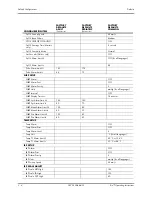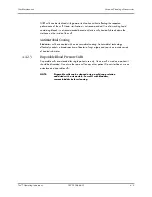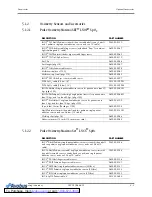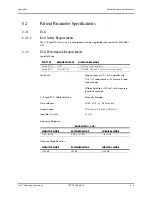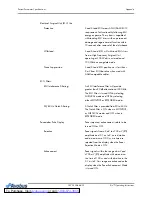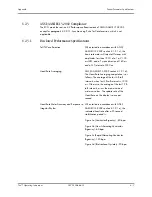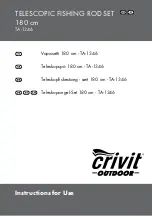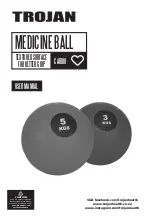
Trio™ Operating Instructions
0070-10-0666-01
4 - 9
User Maintenance
Care and Storage of Thermal Paper
4.8
Care and Storage of Thermal Paper
Thermal chart paper is chemically treated and the permanency of the printout can be
affected by storage and handling conditions.
Conditions which may affect the integrity of the paper and printouts are:
• Ultraviolet Light
We recommend storing the printouts in a filing cabinet within a few days of printing. Long
term exposure to natural or artificial UV sources may be detrimental
• Storage Temperature and Humidity
Keep the printouts in a cool and dry area for a longer lasting image. Extreme
temperature and humidity (above 80 °F/26 °C and 80% humidity) should be avoided
• Solvent Reactions
Do not store the printouts in plastic bags, acetate sheet protectors and similar items made
from petroleum products. These products emit a small amount of vapor which will, over a
period of time, deteriorate the image on the chart paper
• Adhesive Tape
Never place adhesive tape over printouts. The reaction between adhesive compound and
the chemical/thermal paper can destroy the image within hours
• Archives
We recommend that if long term archives are required, make a photocopy of the
printouts as a back-up. Under normal office filing conditions the printouts should retain
acceptable image quality for about five (5) years
4.9
Care and Cleaning of ECG Cables and Leadwires
The recommended cleaning method for ECG cables and leadwires is as follows:
• Wipe using a cloth and ordinary alcohol-free hand soap or USP green soap tincture
• When disinfection is required, a cloth wipe using disinfectants such as isopropyl alcohol,
chlorine bleach in water (1:10 mixture) or 2% Glutaraldehyde solution (i.e. Cidex) is
recommended
• After cleaning, the ECG cables and leadwires should be wiped using a clean, damp
cloth. Dry the ECG cables and leadwires using a clean, dry cloth.
CAUTION:
NOTE:
ECG cables and leadwires must never be immersed, soaked
in any fluids, and they should not be cleaned with harsh
chemicals such as acetone or non-diluted bleach.
NOTE:
Do not autoclave, radiation or steam sterilize ECG cables or
leadwires.
NOTE:
Extended exposure to Ethylene Oxide gas may shorten life
of the ECG cables and leadwires, leading to poor signal
quality.


